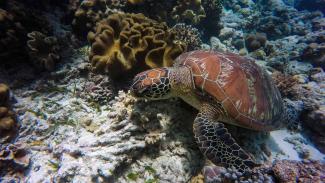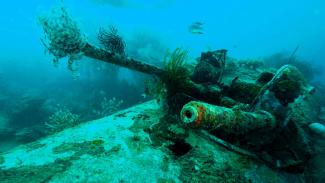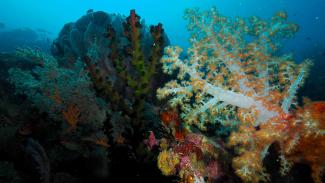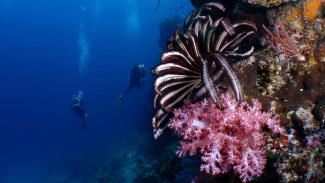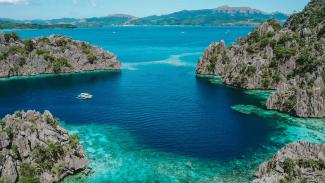Discover some of the best wreck diving in the Philippines
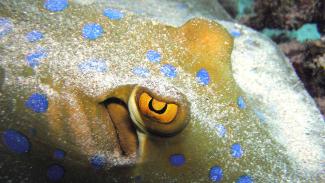
Jarda Malek
Subic Bay is all about wreck diving. This area of Luzon has a rich maritime history and was a key harbour in WWII, resulting in excellent diving options for wreck afficanados.
The wrecks of Subic Bay are not the only option for divers on the island of Luzon however. Others may also wish to explore Nasugbu to the south, or La Union to the north.
For underwater photographers may also wish to take a look at our dedicated dive guide for Anilao, a great spot for nudibranches and other photogenic marine life
Highlights
Best diving spots
Subic Bay is a natural deep harbour and has been a key strategic base of the US Navy since the Second World War. Now the US Navy has left and the area has been opened up to tourism. The main feature of the area are the numerous ship wrecks, a result of the area’s history, ensuring Subic Bay has some of the best wreck diving in the Philippines. These wrecks, along with the other sites in the area, were completely off limits to divers until 1992.
One of the area’s most popular wrecks is the USS New York. After a lifetime of service, she was scuttled by US Forces in 1941 when Subic Bay was taken by the Japanese. She nows lies in 27m of water on her port side. Her huge 17-inch cannons are still intact and the wreck is home to plenty of marine life.
The El Capitan is an old Spanish Wreck from the time when the port was in the hands of the Spanish. The 90m wreck lies in shallow water and can be penetrated easily, making it an ideal wreck dive. There are many other wrecks in the area too, for all different levels of divers, plus coral reefs. Nasaban Point and Grande Island to the south have some of the best reefs in the area. Sadly, the area suffered badly from the Mount Pinatubo explosion in 1991, covering the area in ash and destroying some of the corals. Prior to this time, Sharks, Dolphins & Turtles were regulars in the area, but now are rare. Hopefully, given time, they will return.
Keen to know more? Learn about the history and shipwrecks of Subic Bay on Wikipedia
Further south from Subic Bay, near to Batangas Bay is Nasugbu. The area is only a short distance from Manila and has some good scuba diving. About 15km off the coast is Fortune Island. The island owes its name to the plentiful supplies of booty hidden here by pirates. Sadly the best of the booty is long gone, but the island has some interesting diving, including a Bat Cave, a penetrable wreck & the Blue Holes - three large holes in the coral that bring you to an underwater cavern with crystal clear water & Whitetip Reef Sharks. Cuttlefish are common in the area as they use the Bat Cave as a breeding ground.
Closer to shore are Twin Islands, two rocks jutting out of the sea. Below is a site known as Pink Wall. Starting at around 10m, the wall descends to great depths and is covered in beautiful pink soft corals. Coral Gardens, also at Twin Islands is a pretty, shallow dive that is ideal for beginners. To the north, a series of underwater pinnacles has recently been discovered that attract plenty of life and make a good dive, while further out to sea the Simo Banks have an abundance of life and no shortage of passing Sharks.
Further north on Luzon Island, La Union is a possible place to learn to dive. Sitting in the Lingayen Gulf, it's calm clear waters are ideal for beginners and the area has some nice beaches too. Sadly, the coral is not what it once was in some spots due to destructive fishing practices.
Research Reef is a popular spot for training dives & novices. The site is characterised by many ridges & gullies that provide shelter for many types of fish. There are lots of caverns & swim-throughs in this area for divers to enjoy. At the southern end of Research Reef are the remains of a Japanese WWII freighter, the Hashi Maru. The wreck, which is quite broken up, sits in around 30m of water and is home to some interesting marine life.
Voice of America reef is another easy, enjoyable dive - a shallow reef sloping down to around 22m with plenty of colourful hard & soft corals. The area’s most famous dive is Fagg Tanks. Here, three WWII M10 tanks that were dumped at the end of the Second World War lie in around 39m of water and make an excellent dive for more experienced divers. A huge Moray Eel has made his home in one of the turrets. If conditions are right, when time is up, you can drift along Fagg Wall. The corals here are damaged but plenty of interesting species can be seen on the wall, including Whitetips & even the occasional Whaleshark.
When to dive
The best months to dive this region is normally from January throgh to to June. However, the sites of Luzon’s west coast are relatively protected and can be dived all year round. The northern Philippines can be prone to typhoons from July to November.
Getting there
Subic Bay is only two hours drive south from Manila, the Philippine's capital and major international airport. Nasugbu and La Union can also be reached by road from Manila. Speak to your diving resort or center about transfers.
Activities
Other attractions include visiting local islands, many military monuments, botanical gardens & surfing on San Juan beach, just north of San Fernando.
Resort and liveaboard options
There are a few places to stay, most of which are budget or mid-range. San Fernando has most options and there are a few resorts spread along the coast.


